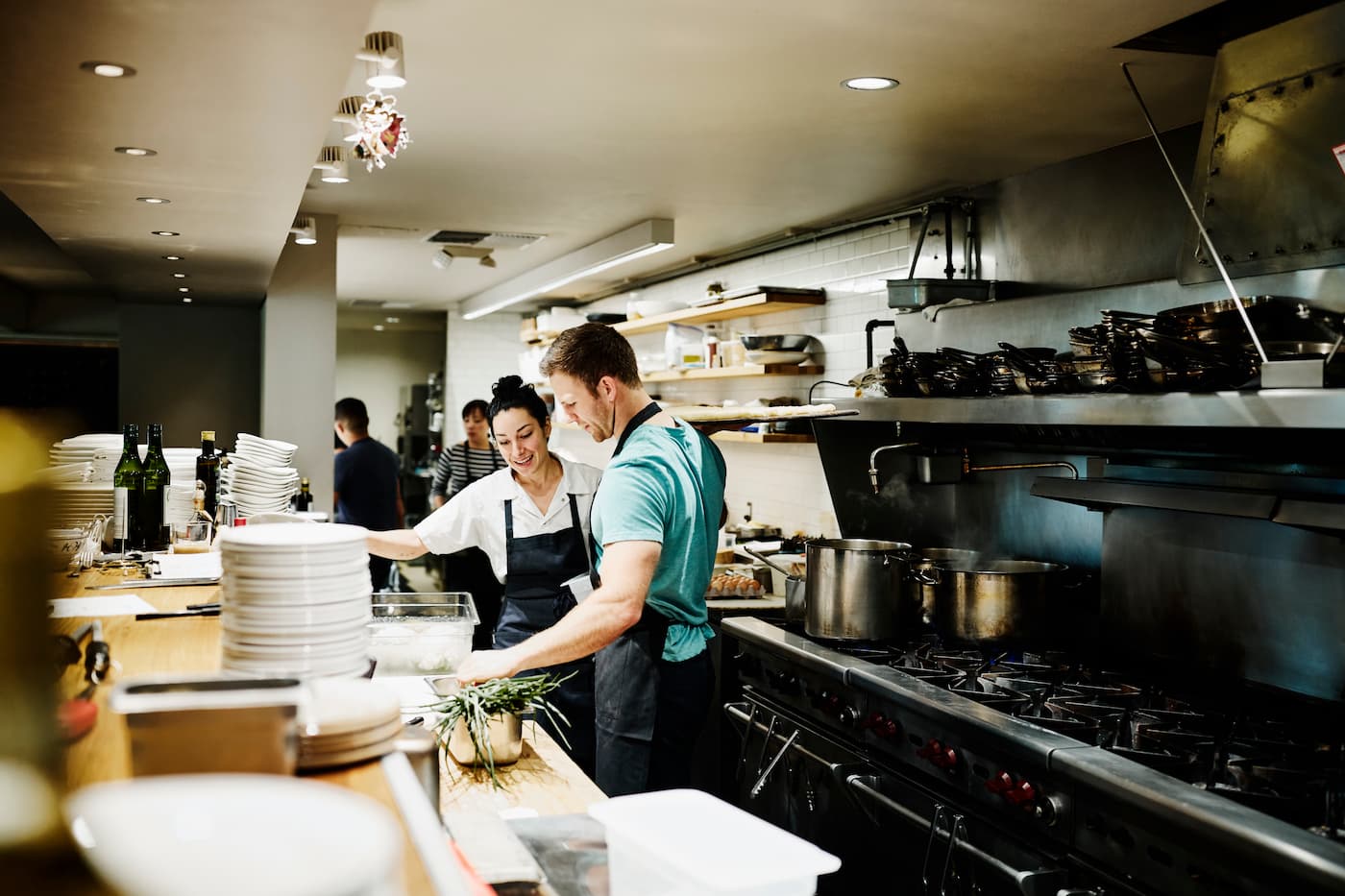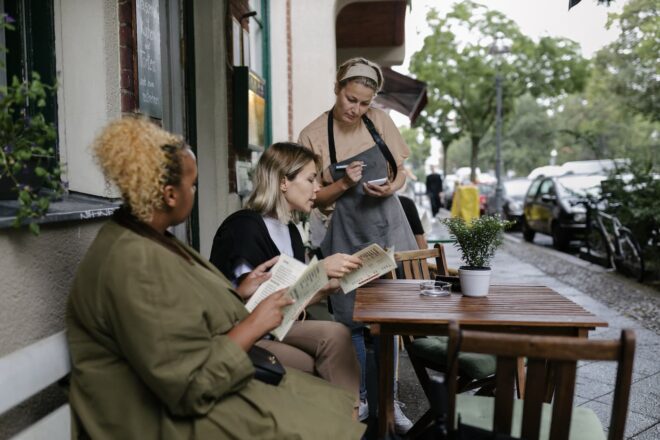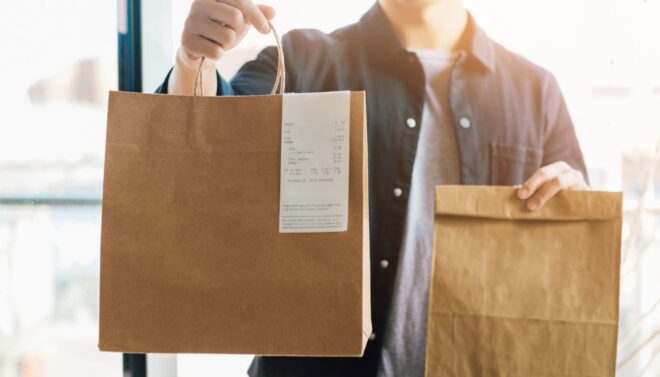From farm to fork: How restaurants embrace tech to help ensure food safety
Editorial Team
8 min read
In recent years, the restaurant industry has witnessed a significant transformation in the way it operates, especially when it comes to food safety standards. With the advent of new technology, restaurants are embracing innovative solutions to help ensure the quality and safety of the food they serve.
From blockchain-based traceability systems to Internet of Things (IoT) sensors, these tech-driven solutions are not only enhancing food safety but also building trust among customers.
Blockchain for food safety: Helping build transparency
Blockchain technology operates as a decentralized, tamper-resistant digital ledger that records transactions in a chronological and unchangeable manner. This technology’s unique characteristics have made it an ideal solution for enhancing traceability and transparency in the food supply chain.
In the restaurant industry, blockchain-based traceability systems offer a comprehensive view of the journey that each ingredient takes from its origin to the plate. Here’s how it works:
- Chain of custody: As the ingredient progresses through the supply chain, its movement is documented at each step, including processing, transportation, and storage. This creates an unbroken chain of custody that can be audited at any time.
- Provenance recording: Each ingredient’s origin, including details about the farm or supplier, is recorded on the blockchain. This information is securely stored and cannot be altered without consensus from all participants in the network.
- Real-time monitoring: IoT sensors and data feeds from various stages of the supply chain can be integrated into the blockchain. This enables real-time monitoring of crucial factors such as temperature, humidity, and storage conditions.
Key benefits of blockchain traceability
- Building trust: By providing verifiable information about the origin and handling of ingredients, restaurants can build trust with consumers who increasingly demand transparency in the food they consume.
- Complying with regulations: Blockchain traceability aligns with the requirements of food safety regulations and standards. Restaurants can easily demonstrate compliance and reduce the risk of fines or legal issues.
- Optimizing supply chain: The transparency offered by blockchain systems helps identify inefficiencies in the supply chain. This, in turn, allows for data-driven improvements to processes, reducing costs and minimizing waste.
- Recalling efficiently: Traditional recall processes can be time-consuming and result in excessive waste. Blockchain-enabled traceability streamlines recalls by pinpointing affected batches and allowing for precision in recall efforts.
Using blockchain in restaurants
- Collaboration with local suppliers: Restaurants that prioritize sourcing from local farmers and suppliers can use blockchain to highlight these collaborations. Customers can learn about the nearby farms and producers that contribute to the restaurant’s menu.
- Ethical and fair-trade practices: Blockchain can track ingredients’ journey to ensure that they come from suppliers that adhere to fair-trade practices. This fosters a positive image and resonates with customers who value ethical sourcing.
- Origin verification: Restaurants can use blockchain to verify the origin of their ingredients. By recording each ingredient’s source and supplier on the blockchain, customers can scan a QR code on the menu to learn about the exact farm or producer from which the ingredients were sourced.
- Dietary accommodations: Many customers have dietary restrictions or preferences, such as gluten-free, vegetarian, or kosher/halal. Restaurants can leverage blockchain to trace the journey of such ingredients and ensure they have not been cross contaminated with allergens or non-compliant products.
- Sustainable sourcing: Sustainability has become a major concern for consumers. Restaurants can use blockchain to showcase their commitment to sustainable sourcing practices. For example, they can verify that seafood is sourced through ethical fishing methods and that produce is grown using environmentally friendly practices.
IoT sensors: Enabling real-time monitoring
IoT (Internet of Things) is among the restaurant trends that show how technology is revolutionizing food safety in restaurants. Blockchain can use insights gained from this technology, which involves the interconnection of devices via the internet, to collect and exchange data. When applied to food safety in restaurants, IoT sensors play a critical role in monitoring various parameters to ensure the quality and safety of ingredients and products.
- Temperature controls: Proper temperature and IoT sensors placed in refrigerators, freezers, storage rooms, and display cases provide constant monitoring. IoT-enabled thermometers can be used to monitor the internal temperature of cooked dishes, ensuring they are thoroughly cooked and held at safe temperatures before being served.
- Storage conditions: Certain ingredients have specific storage requirements, such as being kept away from light or in a controlled atmosphere. Humidity control is also vital to preventing bacterial growth and maintaining food freshness. IoT sensors ensure that these conditions are met consistently, preserving the quality of the ingredients.
Benefits of IoT sensors for food safety
- Data-driven decision-making: IoT sensors generate large amounts of data that can be analyzed to identify trends and patterns. This data-driven insight allows restaurants to optimize storage, distribution, and operational processes for efficiency.
- Preventing spoilage: By alerting staff to temperature deviations or equipment malfunctions, IoT sensors help prevent spoilage and food waste. This not only saves costs but also ensures that only safe and high-quality food reaches customers.
- Real-time alerts: Immediate notifications enable prompt action to be taken when parameters fall outside safe ranges. This proactive approach minimizes the risk of foodborne illnesses caused by improper storage conditions.
- Regulatory compliance: Many food safety regulations mandate strict temperature control. IoT sensors provide a robust system for meeting these requirements and facilitate compliance audits.
Using IoT sensors in restaurants
- Cold chain management: Maintaining the cold chain, ensuring that temperature-sensitive products remain consistently refrigerated from supplier to customer, is crucial. IoT sensors help track temperature changes throughout this journey, preventing temperature abuse that can compromise food safety.
- HACCP compliance: HACCP (Hazard Analysis Critical Control Point) guidelines require monitoring and control of critical points in food production. Restaurant IoT sensors aid in monitoring these points to prevent hazards and maintain food safety.
Contactless technology: Redefining hygiene
The global pandemic has led to a heightened awareness of hygiene and the need to reduce physical contact in public spaces, including restaurants. Contactless payment and other technologies have emerged as game-changers, transforming the way customers interact with restaurant menus, payments, and more.
- Digital menu boards via QR codes: Traditional paper menus are prone to contamination as they pass through multiple hands. Restaurants are now leveraging QR codes that customers can scan using their smartphones. This provides a touchless way to access menus digitally, reducing physical contact and the risk of cross-contamination.
- Contactless ordering and payments: Mobile apps and digital platforms integrated with restaurant POS systems allow customers to place orders and make payments directly from their smartphones. This eliminates the need for physical interaction with menus, waitstaff, or payment terminals.
Benefits of contactless technology for hygiene
- Efficiency and speed: Contactless ordering and payments help streamline the dining experience. Customers can browse menus at their leisure, place orders without waiting for a server, and complete payments swiftly, resulting in improved operational efficiency.
- Enhanced guest confidence: Customers are more likely to visit and return to restaurants that prioritize their health and safety. Contactless technology demonstrates a commitment to hygiene, building trust and confidence among guests.
- Minimized contamination: By eliminating the need for physical touchpoints, contactless solutions help significantly reduce the potential transmission of germs and viruses between customers and staff.
- Reduced labor interaction: With self-service options, there’s less need for direct interaction between customers and waitstaff. This allows restaurant staff to focus on other critical tasks and reduces the risk of exposure.
Using contactless technology in restaurants
- Mobile apps: Dedicated restaurant apps enable customers to browse menus, customize orders, and make payments seamlessly. These apps can also offer loyalty programs and personalized recommendations.
- QR code menus: Restaurants can place QR codes on tables, walls, or even the entrance, allowing customers to scan and access menus instantly on their smartphones.
- Tabletop tablets: Some establishments provide tabletop tablets for ordering and payment, reducing the need for physical menus and cash transactions.
As restaurants continue to adopt these tech-driven solutions, they not only raise the bar for food safety but also inspire trust and confidence among their customers. Embracing these innovations is not just about complying with regulations, it’s about fostering a culture of excellence where the well-being of guests takes center stage.
With technology as a powerful ally, the future of food safety in restaurants looks brighter than ever before.
Adopt new technology for your restaurant with a great POS system
Whether you need an advanced employee management tool to schedule shifts or a full restaurant POS system to enhance your restaurant operations, Clover’s POS solutions can help you do it all with one sleek, user-friendly tool. Why wait? Get started with a Clover POS system today to elevate your business.
This information is provided for informational purposes only and should not be construed as legal, financial, or tax advice. Nothing contained herein should be construed as medical or health advice. Readers should contact their attorneys, financial advisors, tax preparers, or health professionals to obtain advice with respect to any particular matter.
Related Posts
Full Service Restaurants (FSR)
How to create a restaurant menu
Full Service Restaurants (FSR)
7 benefits of online ordering systems for restaurants
Popular Topics
Stay In Touch
Sign up and learn more about Clover.
Thank you for your subscription!
Recent Stories
- Jewelry store supplies and equipment needed for opening day
- How small businesses can use employee discounts to retain staff
- Tips and tricks for opening an outdoor pop-up restaurant
Please share your contact information
to access our premium content.
Thank you for sharing your contact information.
Download Now





